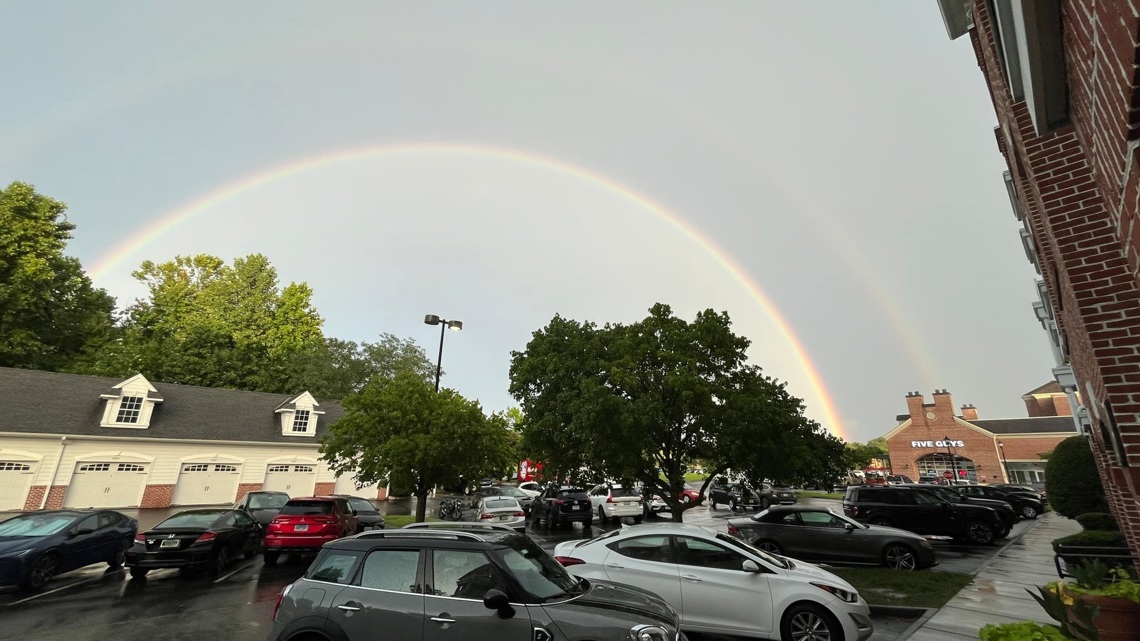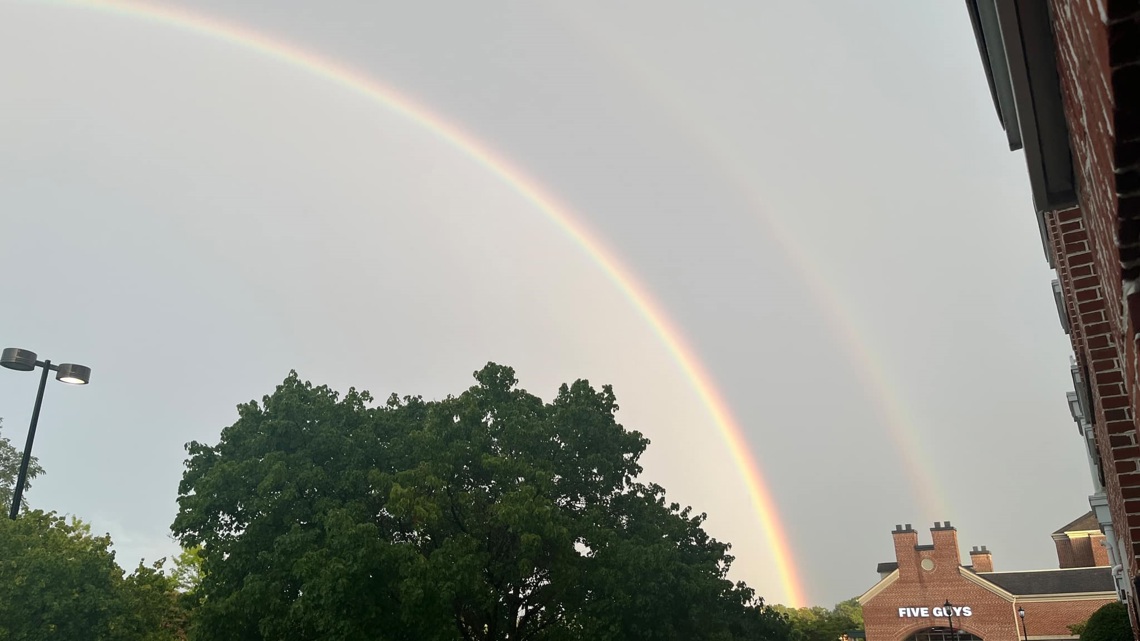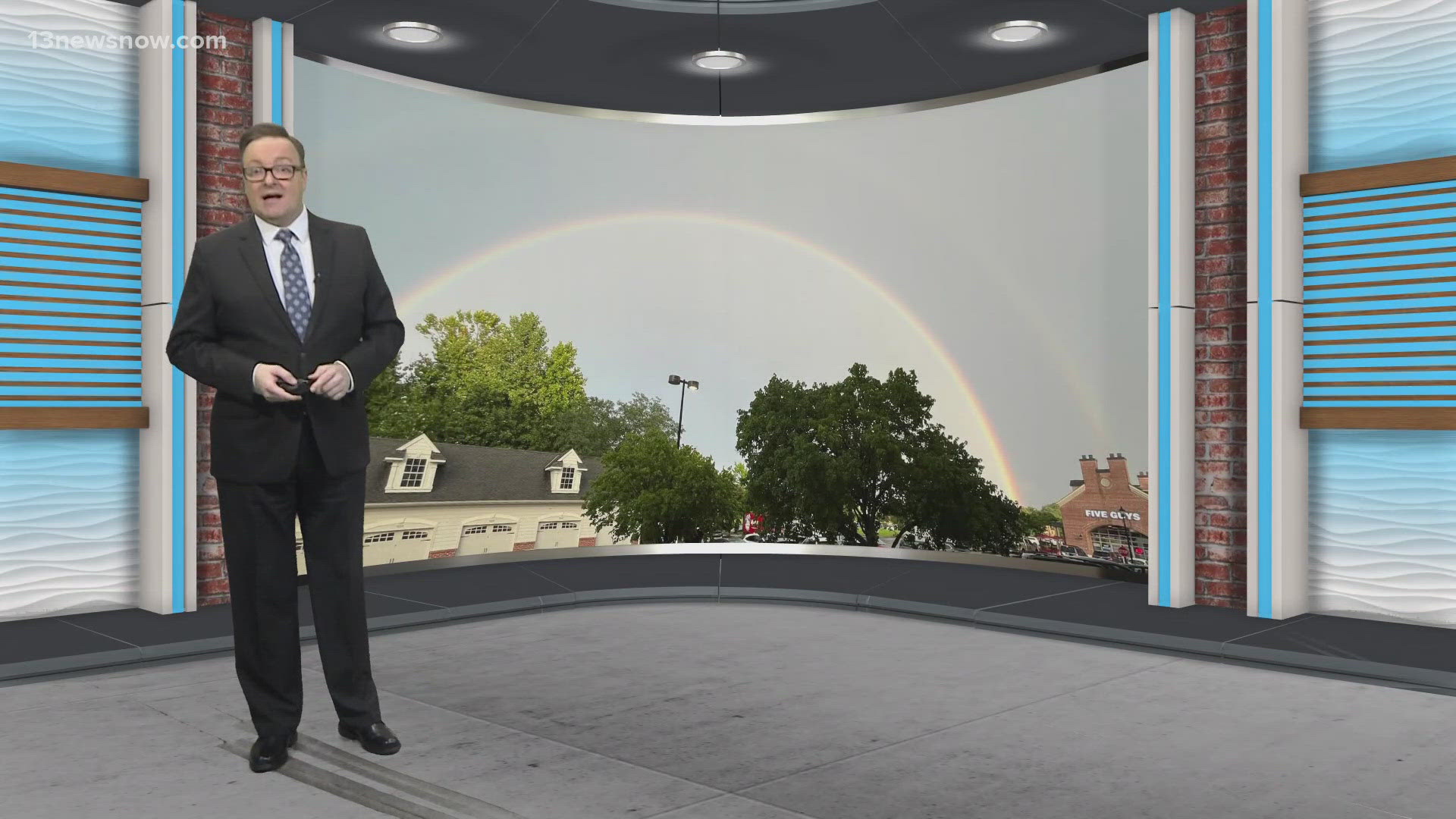NORFOLK, Va. — It’s not uncommon after summertime thunderstorms to see a rainbow on the horizon. But a double rainbow is that much more special. Made popular in a viral video, a double rainbow is a rare event, caused by the unique alignment of sunlight, water droplets, and the observer's perspective.
After a recent round of thunderstorms, Robbie Belch in Williamsburg sent in these pictures of a double rainbow.




But how do double rainbows form? And what makes them different than the more common regular rainbow? It all comes down to physics.
All rainbows occur when sunlight interacts with water droplets in the atmosphere, resulting in a vibrant display of colors.
First, sunlight enters a water droplet suspended in the atmosphere, typically after a shower or thunderstorm. As sunlight strikes the droplet, it undergoes refraction, which means the light bends as it passes through the water droplet.
Inside the water droplet, the light is reflected off the inner surface. This internal reflection causes the light to exit the droplet at a different angle, breaking the light into its full spectrum of colors. Since each color of light has a different wavelength, they all bend at a slightly different angle, creating a rainbow of colors.
In a double rainbow, however, a second reflection of light occurs within the water droplet. This additional reflection results in the formation of a secondary, fainter rainbow outside the primary one.
One thing unique about a secondary rainbow: the common "ROY G BIV" color sequence is reversed due to the extra reflection inside the raindrop.

